#fauna of south america
Text


I like the Autumn-like, warm color theme of Pepa’s family. Here’s two little pieces made in 2022.
First one is from September, set 15 years before the movie’s events.
Originally, I wanted to draw little Dolores listening to Pepa and Julieta’s abdomens, and then, looking puzzled, to Bruno’s, because he, being stressed about another simultaneous pregnancy of his sisters (and one of them having third child in short time), has doubled down on comfort food and gained a gut equally voluminous. But I assumed, it would be hard to convey a joke on paper and it will end to look too confusing, or its point of humor gets misinterpreted, so it turned as it is, an image of nostalgic memory.
Pepa’s look based on early concept arts by Meg Park.
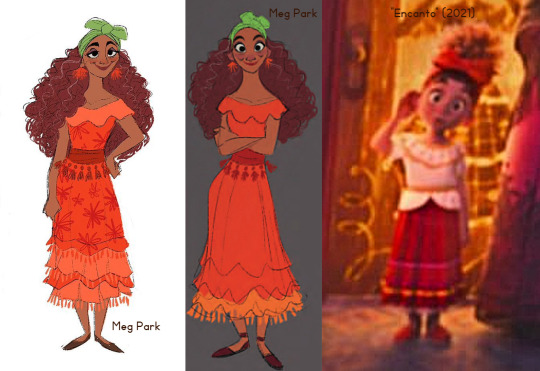
Second one is from May, and shows Antonio 10 years in future with his animal friends.
I was thinking how Antonio personality and partly interests are similar to Bruno’s, to the point some concept arts, also by Meg Park, of him look to me just like Bruno in childhood would look… He may grow to be sort of apprentice of his uncle, generational resemblance only becoming apparent with time.

Also, I have hunch if Mirabel had never taken the action, it would be up to Antonio to save the family: a trait manifested by his gift is one, lack of which was a source of family’s issues – ability of understanding and communication. And rather sooner than later, the rats would direct him to Bruno anyway:)
His friends here are from all over the continent and only vaguely size-accurate, sorry for that, but I cared to include underappreciated Brazilian arboreal porcupine, who, in my opinion, is even cuter than capybara:)
#encanto#encanto fanart#disney fanart#madrigal family#la familia madrigal#pepa madrigal#dolores madrigal#pregnancy#antonio madrigal#fauna of south america#capybara#mountain tapir#brazilian porcupine#phantieart
33 notes
·
View notes
Photo
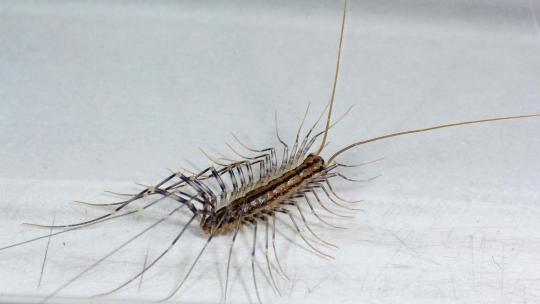
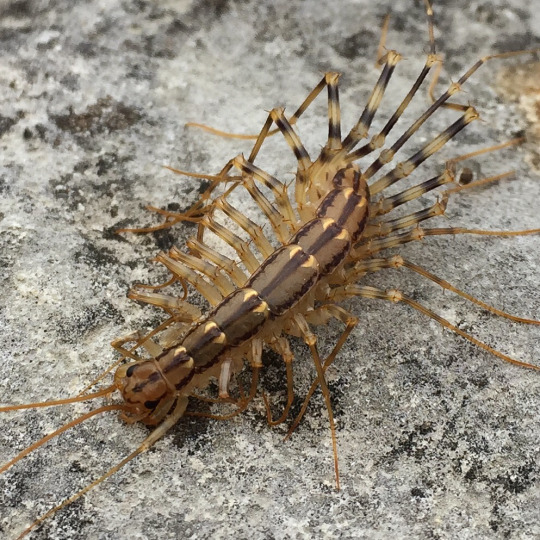
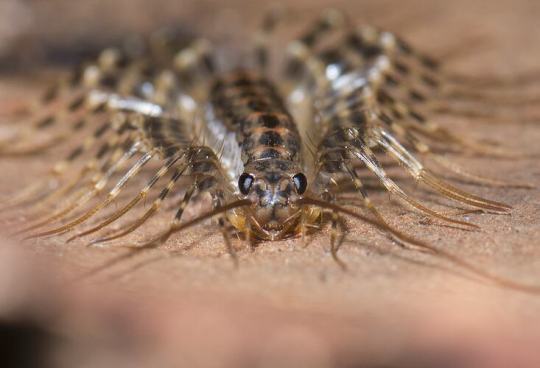
Open Your Home to the Common House Centipede
A common sight in homes throughout Europe, Asia, the Americas, and Australia the common house centipede (Scutigera coleoptrata) is a medium-sized species of centipede originally from the Mediterranean. In the wild, they prefer grasslands and deciduous forests where they can hide under rocks, logs, or leaf litter. These insects have also adapted well to urban development, and are frequently found in basements, bathrooms, and garages, as well as gardens and compost piles.
Like other centipedes, the common house centipede has less than 100 legs; in fact, they only have 15 pairs, with the front pair used only for holding prey or fending off threats. All those legs let the common house centipede move up to 0.4 meters per second (1.3 ft/s) over a variety of surfaces, including walls and ceilings. The actual body of S. coleoptrata is only 25 to 35 mm (1.0 to 1.4 in) long, but the antennae are often as long as the body which can give this insect a much larger appearance. However, they can be hard to spot, especially in their natural environments; their tan and dark brown coloration allows them to blend in seamlessly to surrounding vegetation.
Though they pose little threat to humans, house centipedes are predatory. Their primary food source is other arthropods, including cockroaches, silverfish, bed bugs, ticks, ants, and insect larvae. S. coleoptrata is a nocturnal hunter, and uses its long antennae to track scents and tactile information. Their compound eyes, unusual for centipede species, can distinguish daylight and ultraviolet light but is generally used as a secondary sensory organ. When they do find prey, house centipedes inject a venom which can be lethal in smaller organisms, but is largely harmless to larger animals. This makes them important pest controllers. In the wild, house centipedes are the common prey of rodents, amphibians, birds, and other insects.
The mating season for S. coleoptrata begins in the spring, when males and females release pheromones that they can use to find each other. Once located, the male spins a silk pad in which he places his sperm for the female to collect. She then lays fertilized eggs in warm, moist soil in clutches of 60-150. These eggs incubate for about a month, and the young emerge with only four pairs of legs. Over the next three years, juvenile house centipedes molt 7 times, each time gaining new pairs of legs. After they grow their last pair of legs, immature house centipedes molt an additional 3 times, at which time they become sexually mature. If they can avoid predation, individuals can live up to 7 years in the wild.
Conservation status: The common house centipede has not been evaluated by the IUCN, as it is relatively common both in the wild and in urban areas. Although they have been introduced to areas outside their native range, no detrimental environmental effects have been associated with their spread.
If you like what I do, consider leaving a tip or buying me a ko-fi!
Photos
Joseph Berger
David Paul
Conrad Altman via iNaturalist
#common house centipede#Scutigeromorpha#Scutigeridae#centipedes#myriapoda#myriapods#insects#arthropods#deciduous forests#deciduous forest arthropods#grasslands#grassland arthropods#urban fauna#urban arthropods#europe#north america#south america#asia#australia#oceania#animal facts#zoology#biology
621 notes
·
View notes
Text
Deep within in the rainforests of Venezuela, a series of plateaus arise more than 9000 feet off the ground. From above, they look like islands in the sky. They are so unique in their geography that thousands of plant species exist nowhere else on the planet except on these plateaus. The mystical mountains fascinated explorers and writers for centuries, most notably Sir Arthur Conan Doyle who described an ascent of Mount Roraima in his 1912 novel The Lost World.
#ancient#history#ancient origins#Tags:#Mount Roraima#Venezuela#dinosaur#plateau#Legend#myth#Uwe George#Im Thurn#explorer#Gondwana#South America#flora#fauna#Prehistoric#Waterfall#Walter Raleigh
33 notes
·
View notes
Photo





‘Fauna’ Series by Juan Carlos Franco and Jose Bermudez
Latin America is a biodiversity powerhouse. The region contains over thirty percent of the world’s species and three of the top five countries (Brazil, Colombia, and Mexico) with the most bird, amphibian, mammal, reptile, fish, and plant life. But a recent report found that since European colonization of the Americas, the hemisphere has lost 30 percent of its species and an additional 23 to 24 percent is at risk of extinction. In the face of these threats, it is important that the design industry promote sustainable projects that take action on these issues.
In response, Mexican designer José Bermúdez and Juan Carlos Franco of Colombian studio Vrokka created Fauna, an artisanal collection that aims to spread awareness about the current risks to Latin America’s biodiversity. Inspired by three endangered species from Mexico, Colombia, Brazil and other parts of Latin America, Fauna is a tribute to the world’s extinct and endangered animals.
To create Fauna, the designers used low-tech machinery and handcrafted processes, transforming materials like oak or walnut into unique and exceptionally-crafted pieces that go beyond the typical function of filling a space by also serving a righteous cause.
Currently, the Fauna collection is only available in Colombia, where each piece is manufactured. Part of the proceeds will be donated to NGOs in Mexico, Colombia and Brazil for the conservation of the species.
#art#design#toys#millwork#woodwork#south america#species#endangered#fauna#handcraft#colombia#NGOs#ajolote#guacamayo azul#bird#oso#oso de anteojos#extinction#mexico#columbia#josé bermudez#juan carlo franco#biodiversity#vrokka#artisana#brazil
67 notes
·
View notes
Text
Able to get both flora and fauna at the botanical gardens.

#original photography#cannon camera#photographer on tumblr#nature#pws photos worth seeing#flower#flora#fauna#butterfly#botanical garden#argentina#South America#buenos aires
2 notes
·
View notes
Text
History yelling time, because I am a very excitable little bean. I know I probably wailywailed about this at the time, but I need to waily wail some more.

We get a very, very brief glimpse of this map, followed by Zheng's fleet coming through the jungle and the tiny moment of that had me yelling and flailing because it's a hugely significant historical place that she's bringing them across.
This is the Darien Gap, one of the narrowest points between the north and south American continents. This is a map from 1732, where you can still see a spot marked "New Caledonia" (ie. New Scotland).
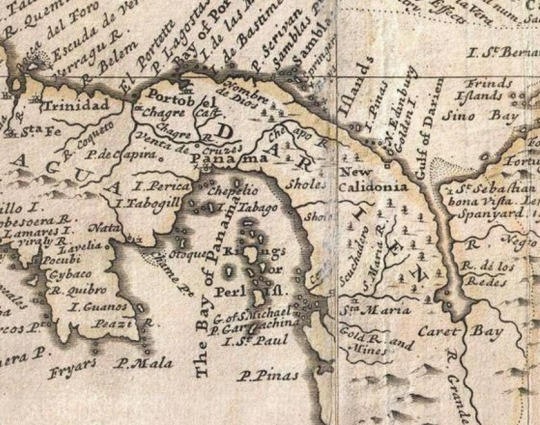
In the late 17th/early 18th century, Scotland tried to set up a crossing from the Atlantic to the Pacific in order to make a fortune in trade by cutting out the need to go around South America and/or Africa. It did not end... well. That is an understatement.
The fact that Zheng is specifically bringing them across at the point where the New Caledonia settlement was based tickles me so much. She's succeeded in doing the crossing and she's done it with a large number of her ships so discreetly that no one has noticed. She's someone who has plans and contingencies and Gets The Work Done.
She also has a varied and diverse crew who would bring different experiences and knowledge to the table unlike the herd of very beige Scotsmen who got to Darien and couldn't deal with the climate, the bugs, the altitude, the flora, the fauna and... well... everything.
And while some people wondered what that scene was kept in for since her ships were blown up - only her ships that were already in the Caribbean were blown up. As you can see on that first map, she has a whole queue lined up to come over. It's all optimistic set-up for S3: her second fleet is coming and Ricky is gonna rue the day he pissed her off.
And for the curious, a connection was eventually made in/around that specific area, but not until the late 19th century and it was only completed in 1904.

112 notes
·
View notes
Note
I need to check in on professor and H!
I love them so much. I would adoreeee a lil blurb or something! 🥺💘 xx
Hot and Bothered
where Harry and the professor are feeling the heat. enjoy!!!
The Professor Series

You weren’t going to go down to the pool. The outdoors weren’t really for you, and warm weather? Hot weather? Forget it. You liked bundling up in cozy sweaters and wearing thick woolen socks and letting the steam from hot tea warm your face.
But everyone was hanging out by the hotel pool today, and recently you’d been making an effort to be more social. That, and Harry left the hotel room before you woke up, so you hadn’t seen him all day; the only way was to get into some shorts and sandals and brave the semi-public pool.
You were in one of Harry’s shirts, not the same one you woke up in, the sole swimsuit you owner underneath. It was plain, not particularly revealing or prudish, merely the first one you grabbed at the store when you were preparing for the trip to South America. Fiddling with the hem of the lace button down, you scanned the poolside for Harry.
It took a few moments, everyone staying at the hotel seeming to have the same idea today. But your eyes snagged on a figure partially covered by the shell of a small cabana. His face was covered and out of the sub, but you would recognize those tattoos anywhere, the defined muscles beneath them. Seeing him laid out so leisurely—legs and arms spread as he dozed on his back, sweat making his skin gleam—made you blush.
Perhaps it would seem odd to some people, but sometimes you forgot your boyfriend was extremely attractive. You recognized that he was beautiful, of course. He had a gorgeous face with incredible features, but the Harry you were used to was sweet and caring and gentle. Soft, tender. This Harry was...he was just hot. Sexy. And he wasn’t even doing anything but lounging on a cabana. But he looked the way he did after they spent a couple hours in bed together. The thought made you blush even more.
Doing your best to reclaim your composure, you went over to Harry and the rest of the band and crew who were all lounging together. Sarah smiled at you and joked about the unrelenting heat, and you smiled back, though you were having trouble focusing now that you were closer to Harry. Setting your stuff down, you sat on the open spot on Harry’s cabana and poked his leg a couple times until he stirred.
“Was wondering when you’d come down,” he said, voice still thick with sleep.
Your mouth suddenly felt dry. He was your boyfriend, not a silly crush. Why did he have this effect on you still? “I—I was watching a documentary about the local flora and fauna.”
“Of course you were,” he said, grinning wide as if he expected nothing less. “Come over here and tell me all about it.”
You hesitated. Something about the heat was making your brain short circuit. You weren’t sure what you would do with Harry sprawled out like that. You looked around the pool deck, reminding yourself that you were far from alone. That seemed to ground you in reality once more.
“If you’re uncomfortable with all the people around, I understand,” Harry said, taking your quick glance to mean something completely different.
“That’s not it,” you reassured. You knew he felt bad about the lack of privacy in your relationship. “It’s just um...It might be a little hot, right? All—All squished together like that.”
Harry seemed to consider your point. “Mmm. You’re right. I’ll be back.”
You didn’t have time to utter a single word as he shuffled out and off of the cabana and headed for the pool. You watched as Harry slid in, quickly dunking his head underwater.
The sight in front of you could’ve come straight out of a movie. The sun seemed to set the droplets of water on Harry’s skin aglow, the muscles in his abdomen flexing as he pushed his hair away from his face, the strands darker than usual now that they were wet.
Your eyes followed the little drops of water down, down, down his body, catching on the strands of hair beneath his navel or disappearing beneath the band of his swim shorts.
There were no words, not a single one, to describe your reaction. Your skin felt fuzzy, mouth dry of all moisture and gaping at your boyfriend a little (later you fretted over whether anyone at the pool caught your reaction and posted it online). Your head was simultaneously empty and full of thoughts you should not have been having in such a public place, first of which being to pull Harry’s shorts down with your teeth—
“There. I’ve cooled down. Now come lay with me.”
There was really no other choice but to say yes.
Harry repositioned himself on the cabana, his arm open for you to press yourself against his side. The sensation of his wet body against yours that was nearly bone dry was a tad uncomfortable, but you didn’t care, not when one of his hands was high up on your leg and drawing patterns into your skin.
You tried to settle, tried to go through the diverse plant population of South America in your head to distract from his hands, his legs tangled with yours, your cheek on his broad shoulder, all the muscles he’d developed with this new work out regimen he’d been trying out recently. It was all going to your head, flooding your senses to the point where you had to close your eyes and try to drown it all out.
“You okay?”
Harry, bless him, didn’t have a clue as to what he was doing to you. Even his voice was unfairly husky, and it nearly made you shiver.
“I’m fine.”
“Sensory overload?” he asked, taking on a gentler tone, but that only made it worse. You wanted him so bad you could’ve screamed it to the whole pool. “If you want, we can go back upstairs and—”
“I’m fine, I promise,” you said.
Tilting your head up, you kissed him, hoping to satisfy the little monster writhing in your belly. For a moment, the slide of his lips against yours seemed to do the trick, but before you thought better of it, your hand was on his cheek to deepen it.
Harry wasn’t opposed at all. He hummed happily as he ran a hand through your hair, but when you broke away to kiss his jaw, leave a little mark behind his ear, his neck, he seemed to understand.
“So you do want to go back up to the room,” he mused. Harry held your chin in his hand, his eyes alight. “You could’ve just said so.”
“I don’t know what’s come over me. I think the heat is altering my brain chemistry, or—”
“Or,” he said, kissing your nose. “You just find me insanely sexy and are losing your mind over it.”
That’s exactly what it was, but he didn’t need to tease you about it.
Harry kissed you again, pulling away too quickly for your taste. “Don’t worry, my love. Happens to me too sometimes.”
“Really?” You didn’t mean to sound so incredulous, but Harry was...well he was on a different playing field than you were physically.
“Mmhm. You drive me absolutely crazy sometimes,” he said, right against your ear so no one else could hear your conversation. “Remember when you were mad at me because I kept leaving dishes in the sink?”
You quirked an eyebrow at him. “I was yelling at you.”
Harry shrugged. “And when I joined you for office hours that one time and you were being very stern with one of your students?”
You blushed. Harry had practically dragged you out of your office once the student was gone. Your office hours hadn’t even ended yet.
“That’s what...what,” your voice hushed to a whisper, “turns you on?”
He shrugged again. “We all have our things, and I like seeing you be assertive.”
A small laugh bubbled out of you as you hid your face in the crook of his neck once more, his skin warm once again. You took a moment to enjoy just laying with him in the sun, the scent of his cologne mixing in with his sun block and the chlorine from the pool. Your fingers found his hair, unclipping the hair clip so you could run your fingers through it briefly. The frenzy you’d been in had dissipated, and now you felt calmer, lulling yourself to sleep in Harry’s arms.
“Love,” Harry said, breaking the silence.
“Yes?” you half mumbled, your lips moving against his chest.
“I’m glad you’ve calmed down, but it seems you’ve transfered your horniness to me.”
Your eyes blinked open in an instant. Not moving from his chest, your gaze flicked up to his, blinking with surprise.
“Yeah. That’s not helping. Come on,” he said, voice tight. He sat up, bringing you with him. Harry quickly gathered his things and even grabbed your bag full of the books you planned on reading while you were out here before your brain turned to mush on you. They were only a couple hundred pages each, a quick read for you, so you needed multiple. Though now it seemed you would be starting them later.
Harry waved goodbye to everyone, and you did the same, anticipation coiling in your stomach with each step back to the hotel room.
When the elevator slid open to reveal the empty hallway that would lead you to the room, Harry picked you up. You squeaked, legs wrapping around his middle on instinct. Both of you were clothed, but heat emanated from your skin as if you were still lying in the sun. Harry kissed your cheek gently as he unlocked the hotel room, tossing everything in his hands onto the floor by the door as he shuffled inside. Clothes were off in an instant, but Harry didn’t seem to want to wait to get to the bedroom. Sitting you on the counter, he gave you one last gentle kiss. A pinch to your inner thigh was enough to tell you that was the last of his gentleness for a while.
#harry styles#harry styles x professor yn#harry styles blurb#harry styles x reader#harry styles fanfic#harry styles imagine#harry styles oneshot#harry styles fanfiction#harry styles x you#harry styles fluff#harry styles writing#harry styles one shot#harry styles fic
633 notes
·
View notes
Text
Tietasaura derbyiana Bandeira et al., 2024 (new genus and species)

(Type femur [thigh bone] of Tietasaura derbyiana [scale bar = 100 mm], from Bandeira et al., 2024)
Meaning of name: Tietasaura = [nickname for Antonieta, the main character of the novel Tieta do Agreste by Jorge Amado; the name Antonieta also means "priceless", referring to the value of the specimen] Tieta's lizard [in Greek]; derbyiana = for Orville A. Derby [founder and first director of the Brazilian Mineralogical and Geological Commission and former director of the National Museum of Rio de Janeiro]
Age: Early Cretaceous (Valanginian–Hauterivian)
Where found: Marfim Formation, Bahia, Brazil
How much is known: A partial left femur (thigh bone).
Notes: Tietasaura was an ornithopod, a group of plant-eating dinosaurs that includes the duck-billed hadrosaurids. However, it was only distantly related to the hadrosaurids, instead being a member of Elasmaria, a diverse group of small to medium-sized ornithopods from the Southern Hemisphere. Tietasaura is the first ornithischian ("bird-hipped") dinosaur to be named from Brazil.
The type specimen of Tietasaura was collected in 1906, but remained scientifically undescribed until now. It was originally labeled as a specimen of Hyposaurus, a seagoing, crocodile-like fossil reptile, and has only been recognized as a dinosaur following more detailed study.
Reference: Bandeira, K.L.N., B.A. Navarro, R.V. Pêgas, N.S. Brilhante, A.S. Brum, L.G. de Souza, R.C. da Silva, and V. Gallo. 2024. A reassessment of the historical fossil findings from Bahia State (Northeast Brazil) reveals a diversified dinosaur fauna in the Lower Cretaceous of South America. Historical Biology advance online publication. doi: 10.1080/08912963.2024.2318406
47 notes
·
View notes
Text
Мнемиопсис - древнейший, люминесцентный организм.
Mnemiopsis is an ancient, luminescent organism.
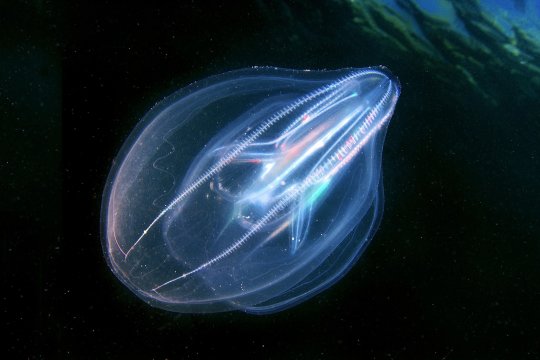
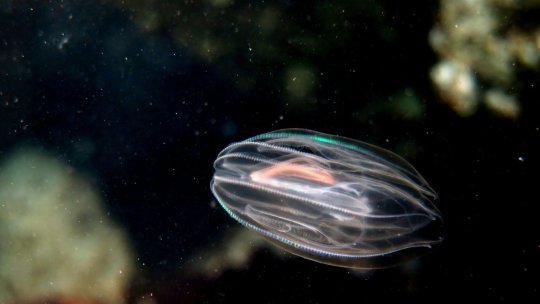

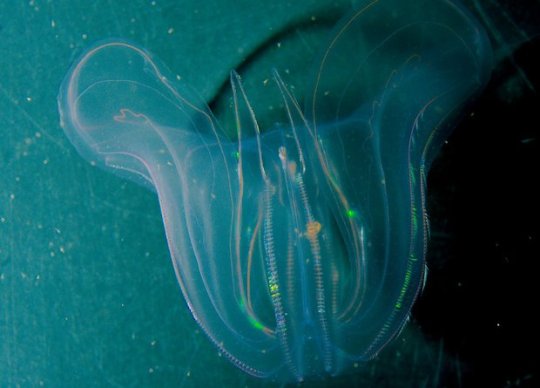


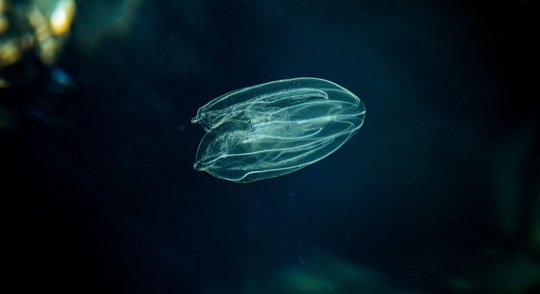
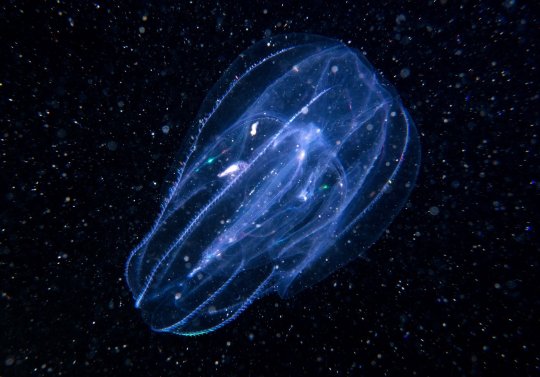


Гребневики не являются медузой, даже не имеют с ними родственных связей, хотя называть их по другому не выходит. Внешне мнемиопсисы легкие, прозрачные, с юбочками-лопастями и гребными пластинами. У них нет мозга, сердца, скелета, зато есть нервная система, орган равновесия и способность к люминесценции. Мнемиопсис – хищник, это плотоядное животное питающийся зоопланктоном, икринками, личинками рыб и моллюсков. На свету переливается яркими цветами, ночью придает морским волнам желтоватое люминисцентное свечение.
По самым последним данным ученых гребневик является одним из первых живых созданий на планете Земля. Ранее считалось, что этот титул принадлежит морским губкам — гораздо более примитивным существам.
Совсем недавно Гребневик Мнемиопсис (Mnemiopsis leidyi) – обитал лишь по ту сторону океана: вдоль восточного побережья Северной и Южной Америки, от Канады до Аргентины. Но, благодаря интенсивному судоходству, вместе с балластными водами он перебрался и в Европу. Как оказалось, гребневик может приспосабливаться к большому диапазону солёности. Теперь его ареал обитания включает Чёрное море, Азовское, Эгейское и Мраморное моря, западное побережье Швеции, даже почти пресное Балтийское море .
Ctenophores are not jellyfish, and they are not even related to them, although it is impossible to call them anything else. Externally, Mnemiopsis are light, transparent, with blade-like skirts and paddle plates. They do not have a brain, heart, or skeleton, but they do have a nervous system, an organ of balance, and the ability to luminesce. Mnemiopsis is a predator, a carnivore that feeds on zooplankton, eggs, and larvae of fish and mollusks. In the light it shimmers with bright colors, at night it gives the sea waves a yellowish luminescent glow.
According to the latest data from scientists, the ctenophore is one of the first living creatures on planet Earth. Previously it was believed that this title belongs to sea sponges - much more primitive creatures. More recently, the Ctenophore Mnemiopsis (Mnemiopsis leidyi) lived only on the other side of the ocean: along the eastern coast of North and South America, from Canada to Argentina. But, thanks to intensive shipping, it moved to Europe along with ballast waters. As it turns out, the ctenophore can adapt to a wide range of salinity. Now its habitat includes the Black Sea, the Azov, Aegean and Marmara Seas, the western coast of Sweden, even the almost fresh Baltic Sea.
Источник: telegram Океан,
nplus1.ru/news/2020/05/08/mnemiopsis,
/www.nkj.ru/archive/articles/23340/, /pikabu.ru/story/mnemiopsis__chuma_xxi_veka_4346622,/turizm.pibig.info/19015-grebnevik-v-chernom-more-mnemiopsis.html,
/ezoteriker.ru/grebnevik-beroe-v-chernom-more-mnemiopsis-chuma-hhi-veka-9-foto-mnemiopsis/,
//spadilo.ru/grebneviki-meduzy-ili-polipy/,
/dzen.ru/a/YbGQswZ7Y0VAg-7O,
/myanapa.ru/fauna/invertebrates/grebnevik/,
//seaforum.aqualogo.ru/topic/54177-гребневик-мнемиопсис-mnemiopsis-leidyi/.
#fauna#video#animal video#marine life#marine biology#nature#aquatic animals#sea creatures#Ctenophores#Mnemiopsis#luminesce#sea view#sea#beautiful#animal photography#nature aesthetic#animal gif#видео#фауна#природнаякрасота#природа#море#Гребневик#Мнемиопсис#люминесценция#планктон#гиф
65 notes
·
View notes
Text
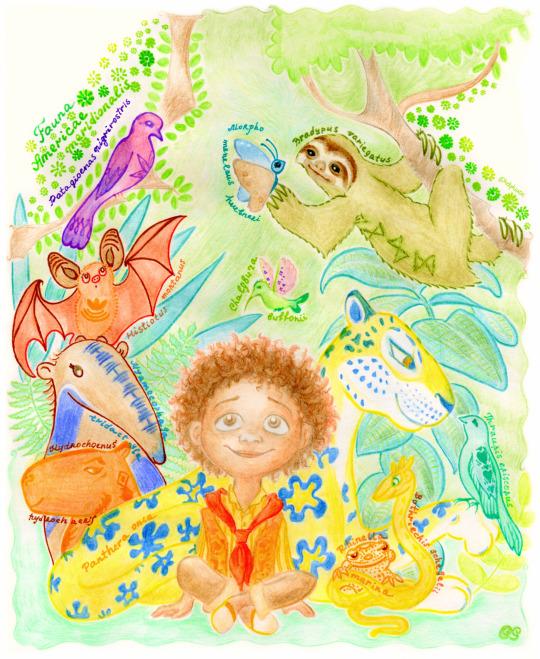
«My Family and Other Animals» (G. Durrell)
Feliz Сumpleaños, Tonito!
This art is final installment in this impromptu mini-series.
Some notes:
Scales of animals aren’t accurate, because it’s a fantasy, I allowed myself an artistic license.
Blue butterflies shown in the movie and promo images are indeed one of many Colombian butterfly species, called Menelaus blue morpho (aka mariposa morfo azul). Based on pattern, it’s also female ones. (First image: male; second image: female.)


Here’s a reference to old concept sketches to the movie, in which Camilo could turn into animals and shown to take appearance of capy.
Also, I flubbed at first, identifying a pigeon species (representing Alma – К.O.) as ruddy pigeon (Patagioenas subvinacea), and had to fix it. It’s a very similar and actually native to Colombia short-billed pigeon (Patagioenas nigrirostris), and it’s as close to ‘mourning dove’ as I could get.
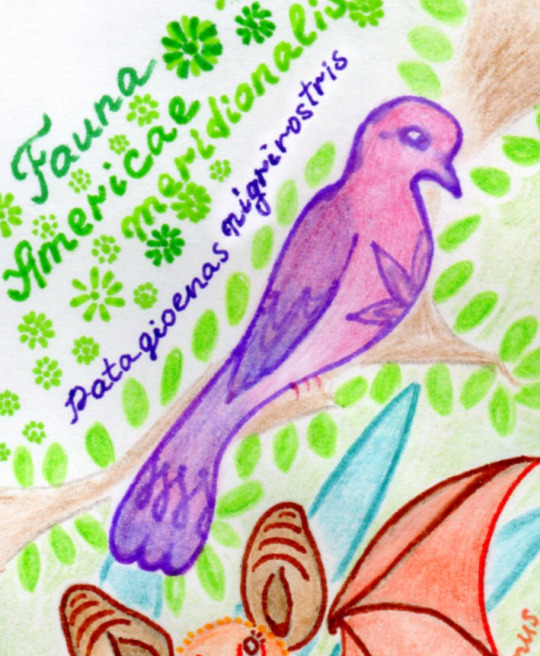
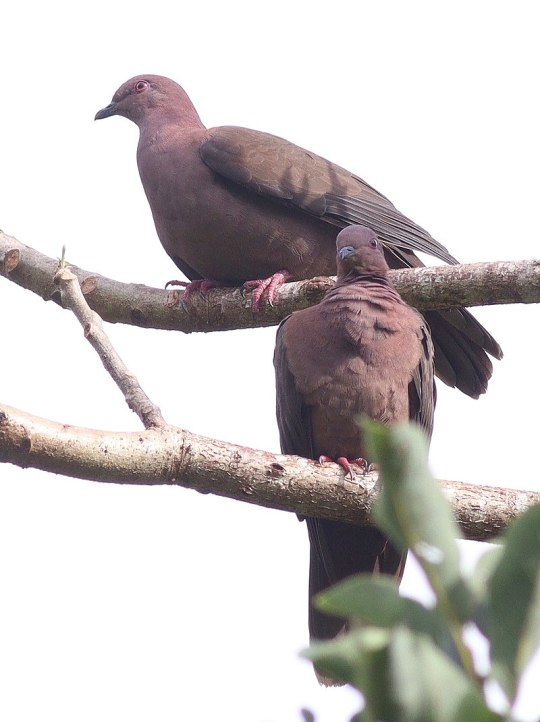
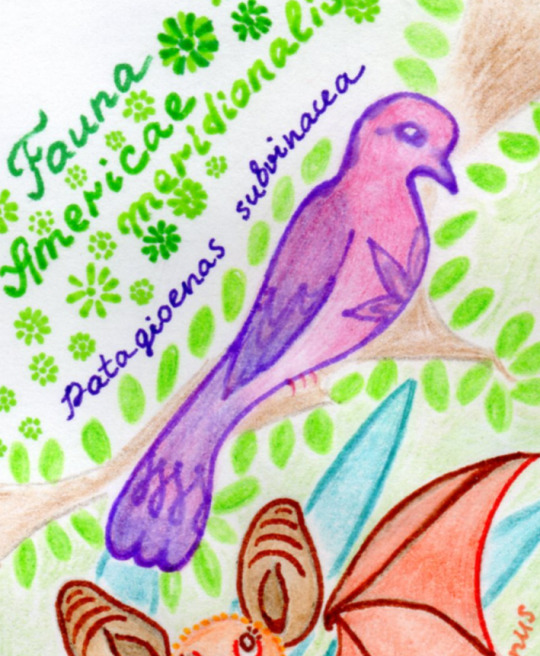

#encanto#encanto fanart#disney fanart#antonio madrigal#fauna of south america#fauna of colombia#short-billed pigeon#menelaus blue morpho#brown-throated three-toed sloth#small big-eared brown bat#white-vented plumeleteer#giant anteater#capybara#jaguar#blue-gray tanager#cane toad#eyelash viper#la familia madrigal#madrigal family#phantieart
41 notes
·
View notes
Text
Uncharismatic Fact of the Day
Calling the Anableps fishes “four-eyes” isn’t an insult-- these species actually have four eyes! Individuals have two eyeballs, and each eyeball has two pupils and two corneas. This allows the Anableps fishes to see above and below the water at the same time, and spot potential prey and predators twice as easily.
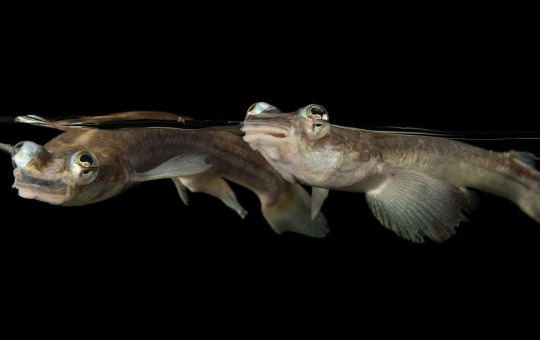
(Image: Largescale foureye fish (Anableps anableps) by Joel Sartore)
#largescale foureye fish#Cyprinodontiformes#Anablepidae#Ray-Finned Fish#Bony fish#fish#freshwater fauna#freshwater fish#wetlands#wetland fish#rivers#river fish#central america#south america#northern south america#Amazon Rainforest
2K notes
·
View notes
Text
Round Two: Heracles vs Heliothraupis
Heracles inexpectatus
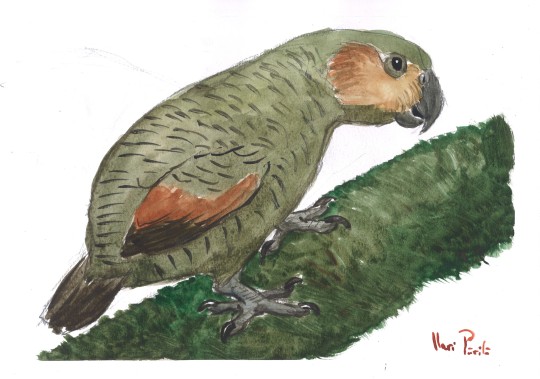
Artwork by @otussketching, written by @zygodactylus
Name Meaning: Unexpected Herculean Parrot
Time: 16 to 19 million years ago (Burdigalian stage of the Miocene epoch, Neogene period)
Location: St. Bathans Fauna, Bannockburn Formation, Aotearoa
Heracles was a truly alarmingly large parrot, related to modern day Kea, Kaka, and Kakapo, known from the fantastic avifauna of St Bathans. Standing more than two feet tall and weighing about fifteen pounds, this animal was much larger than any expected from the St Bathans fauna, which represented the initial colonization of Aotearoa (Zealandia) after it returned above sea level. Heracles is also the largest known species of parrot, ever. It was presumably flightless, though it is uncertain if it was nocturnal like its living relative the Kakapo. Its exact ecology is still uncertain, given the material known from Heracles is limited and its living relatives have very disparate ecologies, though it is possible it was omnivorous similar to the Kea and Kaka today. The St Bathans fauna lived in a freshwater lake system, in a subtropical emergent rainforest. Separated from land bridges, the fauna was dominated by birds, with early relatives of the Kiwi, New Zealand Wrens, Adzebills, and Wedge-Tailed eagles found in the fauna, as well as somewhat modern looking Moas. Smaller flamingos, large fruit pigeons, and a huge variety of geese and other waterfowl are known. In addition, frogs, tuataras, other lizards, crocodilians, turtles, and many different types of fish are known from this fascinating ecosystem.
Heliothraupis oneilli
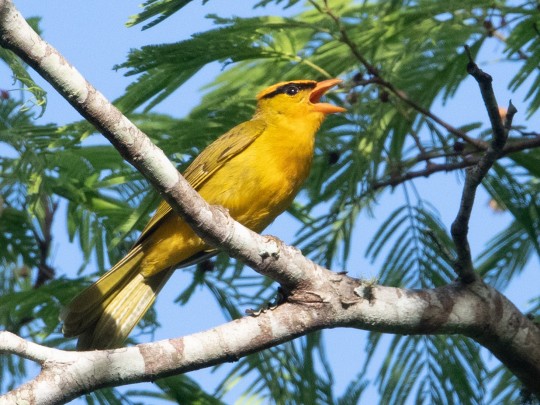
Photograph by John C. Mittermeier, written by @zygodactylus
Name Meaning: O’Neill’s Tanager of the Sun God Inti
Time: Unknown to the present, Holocene, Quaternary
Location: Western Bolivia and Southern Peru, South America
Rarely do we get to talk about a newly discovered living species of bird, but this is one of those excellent times! This bird, a bright yellow tanager with a distinctive black stripe across its eye, was found in the Neotropics - specifically in the Yungas region. Given that Latin America has the largest number of bird species in the world, it makes a certain amount of sense that we may have missed some! First spotted in the nineties, it was properly identified and described over the course of the 2010s. The distinctive appearance of this tanager lead to it being nicknamed the “Kill Bill Tanager”, in reference to its similarity to Uma Thurman’s yellow jumpsuit outfit. Distinct in appearance and population from other tanagers, it was deemed not only a separate species, but an entirely separate genus. It is migratory, breeding in the northern Machariapo Valley and going down to the eastern Andes for the nonbreeding season. It lives in deciduous forests, and breeds in bamboo grasses. It is a loud and vocal bird, making distinctive songs and choruses that happen long after the dawn chorus of most other birds. As it lives in a fairly isolated region of these countries, its habitat is not particularly threatened at this time.
#dmm rising stars#dmm#dinosaur march madness#dinosaurs#palaeoblr#birds#birblr#paleontology#bracket#march madness#polls#heracles#heliothraupis#round two
247 notes
·
View notes
Text
Prehistoric Planet Croc Ideas
So this was a thing I did on Twitter in anticipation of Prehistoric Planet. Obviously crocs (in this case meaning crocodylomorphs) were a pretty massive part of earth's fauna during the late Cretaceous, and seeing as the first season featured NONE I came to speculate which taxa could hypothetically make an appearance.
Now part of the challenge for myself was to come up with a new, interesting contender every day in anticipation of the show's release, each based around the confirmed episides we had and restricted purely to taxa from the Campanian and Maastrichtian. While it took a lot of energy, I did manage to do so. Hell, halfway through they dropped the reveal of Simosuchus, which I had saved for later.
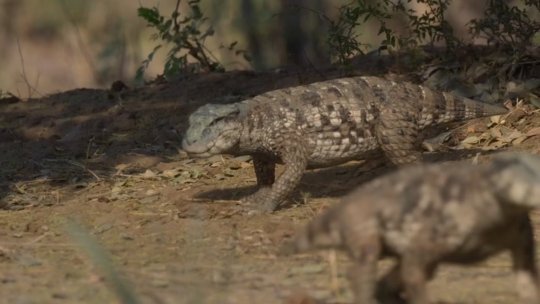
Obviously we didn't get much still, but I'll regardless post my list of candidates and ideas here, perhaps third time's the charme for a lot of these (tho for convenience I'm still ordering them by S2s episode titles). I'll also try to break them apart roughly by biome, starting with islands.
PS: I'd love to hear which crocs people would have loved to see themselves. Any on this list or stuff I didn't even mention? Let me know I'm curious.

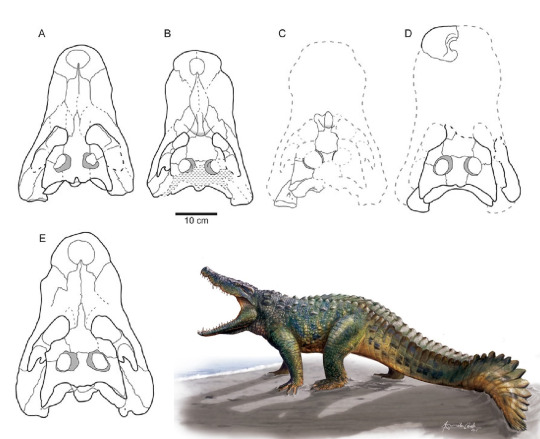

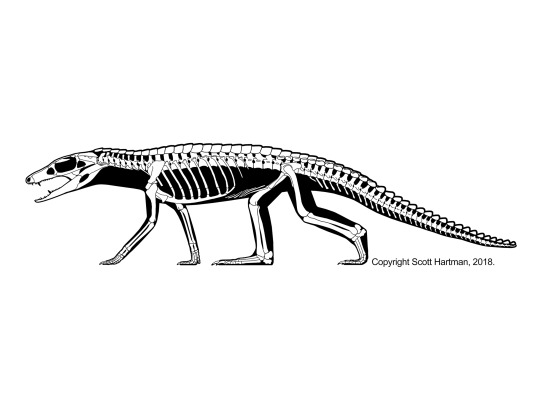

We got a shit ton of island crocs from the Cretaceous actually, which you can broadly divide into two categories.
The crocodiles of the European archipelago as seen in the top row.
Featuring the small, possibly shellfish eating Acynodon (art by Adramelech89), the incredibly widespread Allodaposuchus which did have some possibly semi-terrestrial forms (art by Alejandro Blanco, Aina and Agnès Amblás) and Aprosuchus, a tiny terrestrial critter from Hateg (art by @knuppitalism-with-ue). They already give a nice diversity between tiny durophages with blunt snouts, large, more traditional crocs and lanky land species.
The other island category concerns Madagascar, which had a lot of attention in season 2. Discounting Simosuchus, we got Araripesuchus tsangatsangana (art by Scott Hartman) and Mahajangasuchus (art by Mark Hallet). Both are really cool. The former is yet another smaller terrestrial species that may not actually be part of Araripesuchus, while the later is a massive, 4 meter relative of the famous Kaprosuchus that took to the water independently from all other crocs and has been nicknamed "Hippo croc" for its weird skull. Really I'd have loved to seen an episode entirely dedicated to this place.
Next up we had the badlands episode, which oh boy has a lot of contenders from the clade Notosuchia. Brace yourself.
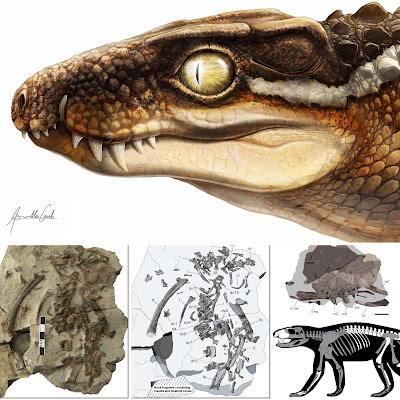


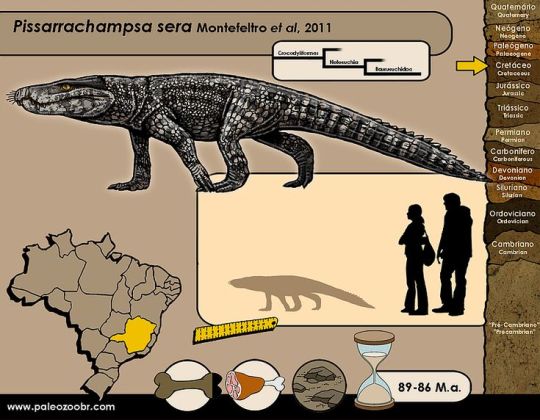


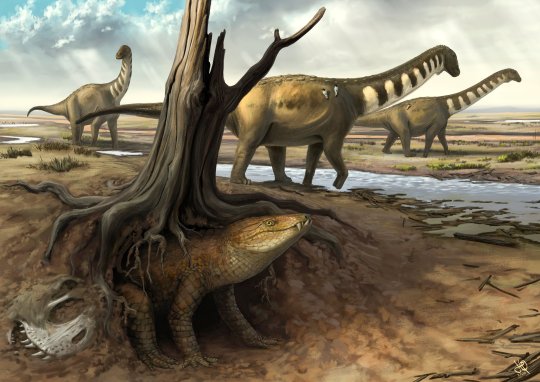

Here again I could split these in two categories.
The first is just general badland taxa. There's Ogresuchus for example, from Spain's Tremp Formation (art by Aina and Agnès Amblás). A relatively small sebecid found in a sauropod nesting site. And we all know what PhP does with baby sauropods. Or the long-necked Gobiosuchus (art by @yoofilos) from Mongolia, which may look like its related to the other ones in this category but actually is a far more ancient type of croc.
The far bigger group concerns South America's Notosuchians. ALL OF THESE are from the Bauru Group, with some even from the same single formation. You got Stratiotosuchus (again by Joschua Knüppe), a large terrestrial baurusuchid that filled the nische of mid sized carnivore in an environment shared by sauropods and abelisaurs. There's Pissarrachampsa (by Felipe Alves Elias), another baurusuchid I decided to feature because we have evidence of a nesting site that shows they only had few eggs. A great opportunity to show their tender side. Uberabasuchus (justin_an74), part of the bizzarly proportioned peirosaurids. Adamantinasuchus (by Deverson da Silva), a small, lanky Notosuchian and of course the heavily armored omnivore Armadillosuchus (by the ever talented Júlia d'Oliveira). Hell you could do a full episode just on the foodweb of the Bauru Group (Godoy et al. 2014).
Then there's swamps, which I'll just use to dump all the crocs that don't fit into the other categories.
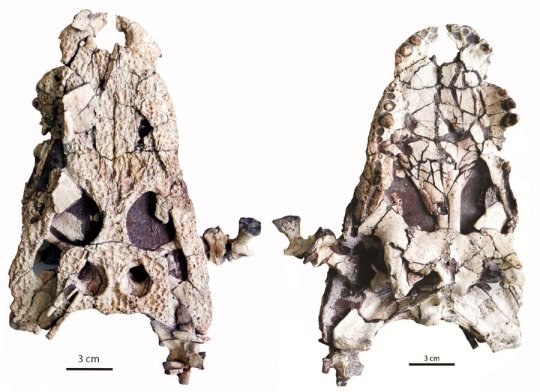


As you'd expect, freshwater would be ideal for crocs with a more traditional semi-aquatic lifestyle, here represented by three forms. Jiangxisuchus (image by Li et al. 2014) is a paralligatorid, which are tiny crocodilians from the Cretaceous and Paleogene of east Asia. We honestly don't know what they are, some say alligator relatives, others say they are closer to crocs. But its small and cute. Then there's Roxochampsa (artist of the model I couldn't find), which looks suspiciously crocodilian but is actually a relative of Uberabasuchus from the badlands, hell it appeared in the same formation. Still, I reasoned that I'd throw it into this category because I already proposed so much for badlands (none of which came true but hey). And then there's Denazinosuchus (art by Andrey Atuchin). Again it looks deceptively like a modern croc, but is actually the last remnant of the goniopholids, crocodyliforms that were prominent animals in the Jurassic and early Cretaceous. It could have brought both taxonomic diversity nad highlighted croc resilience till the end.
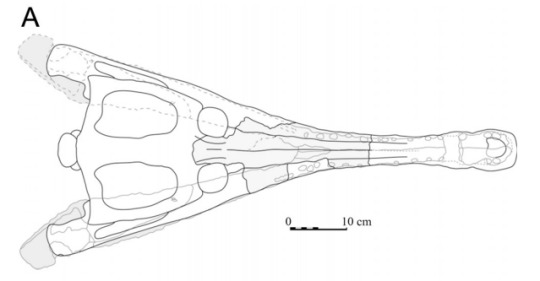

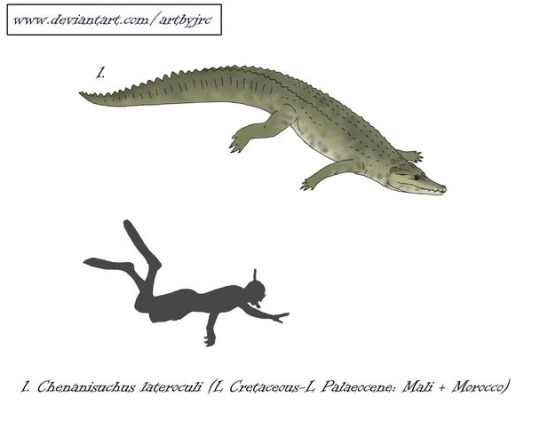
When it came to picking out crocs for Oceans, it got tricky. Obviously season 2 tried to differentiate itself by being set more in the open ocean, not the coast, and true pelagic crocodiles weren't around by the end of the Cretaceous. So I had to settle for coastal animals. There's Sabinosuchus (Schiller II et al. 2016), a cousin to Sarcosuchus and, like Denazinosuchus, one of the last of its lineage. Also its from Mexico which is rarely talked about for its fossils. Rhabdognathus (Ghedoghedo) is a distant cousin, a slender snouted dyrosaur. Unlike pholidosaurs, dyrosaurs actually did really well after the KPG impact and spread around a lot, living way into the Eocene. And finally Chenanisuchus (art by artbyjrc), which like Rhabdognathus was found both before and after the impact that killed the dinosaurs.

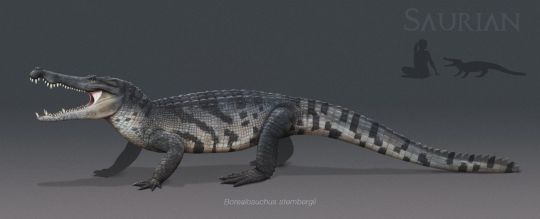
And the final two I shall talk about, both of which I thought/hoped would appear in the North America episode. Again, there's certainly overlap, both would have just as much fit into swamps, while many others would have also suited North America. Regardless, here's Brachychampsa (Tom Parker) and Borealosuchus (Chris Masna), both iconic animals from the Hell Creek Formation. One closely allied with alligators and caimans, the other more basal with a head-shape more similar to todays crocodiles.
Now obviously there'd have been a lot more. Part of the challenge to myself was to try and be as diverse as possible, rather than just listing 10 different baurusuchids I went with only two, tried to include as much of the world as possible, etc.... There's also the fact that some really awesome taxa, Titanochampsa, Brachiosuchus and Eurycephalosuchus, all incredibly unique or interesting, were published too late to have been considered for the show.
And now, in hinsight, we obviously know that with the exception of Simosuchus none of them made it in. Which is a shame, but maybe next time.
#prehistory#palaeblr#crocodile#paleontology#long post#prehistoric planet#prehistoric planet 2#borealosuchus#brachychampsa#simosuchus#pissarrachampsa#stratiotosuchus#gobiosuchus#ogresuchus#uberabasuchus#roxochampsa#armadillosuchus#adamantinasuchus#jiangxisuchus#denazinosuchus#sabinosuchus#rhabdognathus#chenanisuchus#mahajangasuchus#araripesuchus#acynodon#allodaposuchus#aprosuchus
157 notes
·
View notes
Text
A writer’s guide to forests: from the poles to the tropics, part 7
Is it no.7 already? Wow. A big shout out to everyone who has had the patients to stick with this. Now onto this week’s forest…
Dry forest
Water is life. That’s a fact. And especially where it doesn’t rain for more than half the year.
Location: Dry forests are scattered throughout the Yucatán peninsula ,South America, various Pacific islands,Australia, Madagascar, and India. Areas have been cleared by human activity, and the SA dry forests are classified as the most threatened tropical forests.
Climate: Temperate to tropical, with just enough rain to sustain trees. Many are monsoonal, with rain coming in one or two brief periods separated by a long dry season.
Plant life- Hardy trees, such as Baobab and Eucalyptus are able to last with little rain by tapping into groundwater with extensive root systems. Many trees are evergreen, but in India, many species are deciduous. Trees are often more spaced out, and shrubs and grasses grow extensively. Cacti are common plants in the Americas, with some growing tall enough to be considered trees. In order to survive the heat and lack of water, many small plants are annuals, or store water in tubers. Palms can make up a large percentage of the trees, as was the case in the now vanished forests of Easter Island.
Animal life- As they can come and go when they please, birds are common species. Larger animals are active year round, with smaller species of mammals, amphibians, and certain insects only coming out during the rainy season. Isolation means that islands become home to many endemic species; think about Madagascar and the lemurs, or Darwin’s finches, iguanas, and tortoises in the Galapagos. Isolation has also led to the marsupials of Australia developing to fill the niches that would normally be occupied by placental mammals .The introduction of invasive species has brought about the extinction of island fauna.
How the forest affects the story- Water, or the lack of will be the biggest challenge your characters will face. Rivers and lakes may be seasonal, so other sources will have to be utilized. Drinkable fluids can be obtained from various plants and animals, or maybe the bedrock is porous and water accumulates in cenotes. Your characters could come from a culture that builds artificial reservoirs to collect the rain and store it for the dry season. With careful water management, cities can thrive in dry areas. But your characters will have to be careful. Prolonged drought will see societies go the way of the Maya. Deforestation leaves the topsoil vulnerable to the wind, and forests, farms, and grassland will inevitably turn to desert. Whether nomadic or sedentary, your characters and their society will have to find a way to interact with the forest without destroying it or themselves. Can they do it? Can a damaged biosphere be restored before it’s too late? The success or failure of your characters and/or their predecessors can be a driving focus of the plot. Of course ,when the rains do come, it could be in the form of a cyclone. Dry ground does not readily absorb water, and flash floods are a danger. Water can grant life, but it can take it as well.
#writing#creative writing#writing guide#writing inspiration#writing prompts#writer#writers#writing community#writer on tumblr#writeblr
47 notes
·
View notes
Note
How would they help their s/o fall asleep when they're having a rough time?
Leon uwu, Ghostface, Pyramid head, Wesker
I actually have a prompt saved for this. But I guess I'll be writing it now.
With a Reader who has a hard time falling asleep.
Leon, Ghostface, Pyramid Head, Mastermind
Leon S Kennedy
Hard time sleeping huh?
Yeah, he's had those days before.
He has some PTSD.
So sleeping can sometimes mean nightmares.
He won't judge.
If it is nightmares, he'll lay your head on his lap.
Speaking softly he'll tell you all his fun experiences traveling the world.
Of all the beautiful countryside sides he saw in Spain.
Of all the pretty flora and fauna in South America.
Or memories the two of you shared.
His voice can be very soothing.
You'll be asleep before you know it.
If it's because you have too much energy, he'll take you for a run.
A long run.
You'll crash after.
Ghostface
Can't sleep?
Neither can he.
Let's stay up all night together!
It'll be like a sleep over!
First, he'll disappear for like an hour and come back with a backpack full of things.
Danny swiped snacks, booze, somehow a boardgame, and Caleb's gun.
How?
He won't say.
But you're having fun tonight.
What are you going to do with the guns?
Drink the booze, keep the bottles, then shoot.
Duh?
Everyone will be thrilled with you.
Especially Caleb.
He's pissed.
But you'll both eventually fall asleep in a sugar fill drink coma.
It was an enjoyable night.
Pyramid Head
He isn't a human.
So he doesn't need sleep.
But you are.
He isn't well versed in human health.
So he'll ask others who are.
AKA. the solution to any health question he has.
Sally.
She is a nurse.
After getting some ideas, he's standing before you with blankets, pillows, various teas, and candles.
He's going a bit overboard.
But it's because he loves you.
Pick a tea.
He'll start it while he lights the candles and makes a bed.
He likes to stroke your hair.
Kind of makes him calm.
And when he's calm, the world is calm.
You'll be asleep before you know it.
Mastermind
He doesn't need much sleep.
Uroburos provides him with all the energy he needs.
But you need it.
He'll sigh and pretend to be annoyed.
But he's really concerned.
He doesn't usually sleep in the bed with you.
He has lots of work to do after all.
But, for tonight, he will.
Only if you go to sleep.
He'll place you under the blankets before crawling in himself.
He'll pull your head close to his chest and wrap both arms around you.
He's really warm.
The sound of his steady breathing is relaxing.
He actually fell asleep before you did.
But, you finally got him to sleep with you.
That's a win.
#dbd imagines#dbd ask blog#dbd x reader#dbd killer#dbd ghostface#dbd survivor#dbd mastermind#dbd leon s kennedy#dbd pyramid head
129 notes
·
View notes
Text
orville peck: appropriation and intellectual property
Orville Peck is a white South African man who has built his entire career off of colonial North American western aesthetics that are directly influenced by Métis and First Nations cultures and aesthetics. This aesthetic is incredibly loaded and has a history that he seemingly has no understanding of other than the fact that often cowboys were queer. In fact, Peck has gone so far as to rip off Métis and Saulteaux artist Dayna Danger.

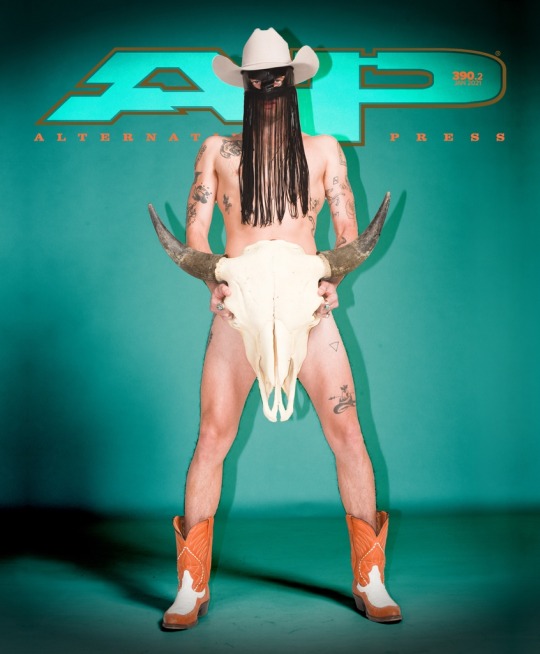
Fig. 1: Danger, Dayna. Big’Uns: Adrienne, 2017. Courtesy of the artist’s website.
Fig. 2: Orville Peck for Alternative Press Magazine, January 2021
The first image is from a series of similar photographs created by Dayna Danger, well known contemporary artist from Winnipeg, Manitoba. The second image is Orville Peck's cover for Alternative Press magazine's January 2021 issue. In addition to the responsibility of the photographers and stylists to be researching artwork and influences and giving proper credit, it is also up to all parties to understand the colonial implications of the material culture represented in Peck's magazine cover.
Given that Peck is a white South African man I highly doubt he has an actual understanding of how North America was colonized, how animals like bison were hunted into near extinction by white settlers seeking to starve the First Nations and Métis people into extinction as a tool in their ongoing genocide. Many populations of native fauna are still recovering from this practice. In addition to slaughtering millions of animals, white settlers posed proudly with their trophies, mountains of skulls representing the loss of our animals and their triumph over nature and our people.

Fig. 3: Men standing with pile of buffalo skulls, Michigan Carbon Works, Rougeville MI, 1892. Photo from Burton Historical Collection, Detroit Public Library
Rather than providing an artistic compliment on the history of North American colonialism and cowboy culture, Orville Peck culture hopped from one settler-colonial state to another, to profit from and flatten the aesthetic into something simply rooted in queer culture rather than Black, Mexican, Métis, and First Nations communities and histories.
Works Cited:
Alternative Press. Orville Peck cover, January 2021.
Danger, Dayna. Big'Uns: Adrienne, 2017. https://www.daynadanger.com/photography
Tascheru Mamers, Danielle. Men standing with pile of buffalo skulls, Michigan Carbon Works, Rougeville MI, 1892. Photo from Burton Historical Collection, Detroit Public Library. December 2020.
26 notes
·
View notes